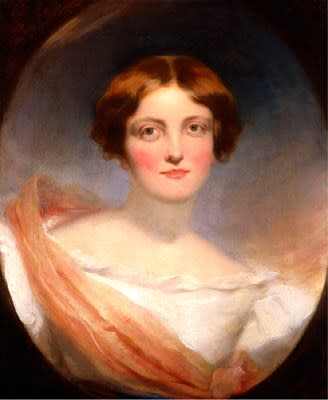
George Henry Harlow
To view all current artworks for sale visit philipmould.com
Of the generation of British painters who received their apprenticeship in the studio of Sir Thomas Lawrence, George Henry Harlow, who entered the studio in 1802 was among the more talented.
His impetuous and conceited character was antipathetical to that of the master, however, and his career in the studio was short-lived. In this at least he was not unique, and a number of men who trained under Lawrence, painters such as William Etty and Samuel Lane, found the experience less than rewarding. Lane’s description of being in the studio records the frustration of an eager young painter not trusted with any work of interest or importance: ‘When I apply for something to work upon, He sometimes walks about uncertain what to give me, & at last puts into my hand a three quarter portrait, desiring me to paint to it a plain background which I can do in three quarters of an hour, & I am then again witht. employ.’1 Incomprehensible as this process may have seemed to the student, for the master it made good sense, and for each pupil entrusted to his care Lawrence received one hundred guineas.
Although the experience of working under Lawrence may have been unsatisfying in the short-term, its effects on Harlow’s manner are appreciable. The present portrait presents a generalised interpretation of the Lawrentian manner, although the older man’s realism is tinged with an incipient sentimentality. The melting gaze and auburn colouring are characteristic of Harlow, and can be distinguished from the direct characterisation and deep, bold palette habitual with Lawrence. The differences between the two painters are less significant qualitatively than as the different stylistic emphases of two generations. Harlow is a painter of the nineteenth century, and his and his contemporaries’ work heralds an age whose sensibility had begun to shift from the grittier values of the Georgians. Harlow did not live out this progression, and instead of becoming one of the leaders of the new painting school he died aged thirty-two in 1819.
1. Joseph Farington’s Diary May 7th, 1806, quoted in Kenneth Garlick, Sir Thomas Lawrence, A Complete Catalogue of the Oil Paintings, Phaidon, 1989, p. 25.
Provenance
Private Collection, USA
Be the first to hear about our available artworks
* denotes required fields
We will process the personal data you have supplied in accordance with our privacy policy (available on request). You can unsubscribe or change your preferences at any time by clicking the link in our emails.